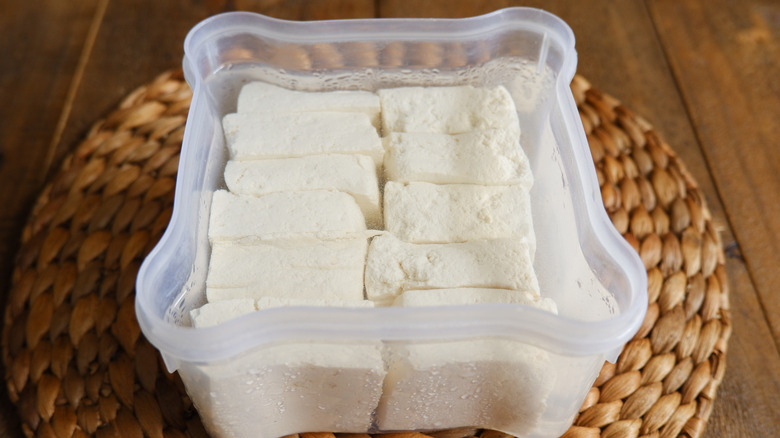Here's How Often Tofu Needs Fresh Water For The Best Storage Results
While there are many hacks out there for preparing your tofu, such as coating it in starch for crispiness or freezing it to make it seem more like meat, there hasn't been as much of a discussion on how to store your tofu for the best results. This can lead you to either cook it all at once or use what you need and watch the rest wither away over the course of the week. But rather than cooking the entire block, you can use what you need and save the rest — you just have to water it every couple of days to maintain its freshness.
This means that you can feel free to fry up ½ of your block in a stir-fry and save the rest for your morning smoothies or use some as a substitute for the creamy cheese in the salad you have for lunch. By switching out your water, you'll have longer access to your tofu, making your options endless for recipes.
Change the water every couple of days for the best quality tofu
Depending on whether you buy the silken, medium, or extra firm variety, your tofu can contain as much as 85% water. Not only does this mean it's important to press tofu, as it drains out the extra water, allowing it to crisp up and absorb all of the flavors you add to it, but it also means it should be stored in water when you're not using it. If you've purchased tofu before, you'll have noticed that most blocks come in packages that contain water as well. That's because the water prevents the tofu from drying out and maintains its quality and texture — so naturally, you should do the same with your leftovers.
While some suggest adding salt to the water or not changing the water at all, it's recommended that you change the water that your tofu is in every couple of days. When stored this way, your tofu will remain fresh in the fridge for anywhere from a week to up to 10 days. Although adding salt to the water keeps the tofu fresh longer, it also adds a noticeably salty taste to it that might not work for all recipes. Taking this extra step will also prevent cloudiness in the water, which can be a sign of bacterial growth.

